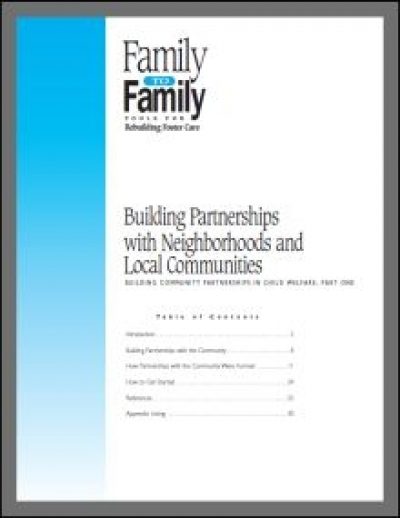Establishing Community Service Areas
Child welfare agencies have used varying approaches to delineate community-based service areas. Some used data analysis to guide the process while others used existing school boundaries to define a community.

As part of the Family to Family Tools for Rebuilding Foster Care series, this document summarizes how Family to Family grantees created partnerships in the community as a way of improving child welfare services. The report presents information about how traditional child welfare approaches vary from a community partnership model, ways to improve possible negative perceptions communities may have about child welfare, the establishment of geographically-defined areas to improve service delivery and how community services can be used for children and families. A few Family to Family grantees are used as examples to demonstrate how the suggested approaches might be implemented.
Working with communities requires child welfare agencies to make important changes in their service delivery systems. Decisions about children will need to be made collaboratively with community partners while processes will require more flexibility to accommodate community factors and a larger number of stakeholders. The service delivery framework also must focus on strengths rather than deficits of a family and the community.
Elements of Community Partnerships
We hope you'll find value in this report. We’d love to get a little information from you, which we'll use to notify you about relevant new resources.